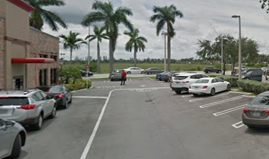Frozen Shoulder (Adhesive Capsulitis)
Information on this article from American Academy of Orthopedic Surgeons
Description Of Frozen Shoulder
- In frozen shoulder, the shoulder capsule thickens and becomes tight. Stiff bands of tissue —called adhesions — develop. In many cases, there is less synovial fluid in the joint.
- The hallmark sign of this condition is being unable to move your shoulder - either on your own or with the help of someone else. It develops in three stages:
- Freezing. In the "freezing" stage, you slowly have more and more pain. As the pain worsens, your shoulder loses range of motion. Freezing typically lasts from 6 weeks to 9 months.
- Frozen Painful symptoms may actually improve during this stage, but the stiffness remains. During the 4 to 6 months of the "frozen" stage, daily activities may be very difficult.
- Thawing Shoulder motion slowly improves during the "thawing" stage. Complete return to normal or close to normal strength and motion typically takes from 6 months to 2 years.

In frozen shoulder, the smooth tissues of the shoulder capsule become thick, stiff, and inflamed.
Cause
The causes of frozen shoulder are not fully understood. There is no clear connection to arm dominance or occupation. A few factors may put you more at risk for developing frozen shoulder.
Diabetes. Frozen shoulder occurs much more often in people with diabetes, affecting 10% to 20% of these individuals. The reason for this is not known.
Other Diseases. Some additional medical problems associated with frozen shoulder include hypothyroidism, hyperthyroidism, Parkinson's disease, and cardiac disease.
Immobilization. Frozen shoulder can develop after a shoulder has been immobilized for a period of time due to surgery, a fracture, or other injury. Having patients move their shoulders soon after injury or surgery is one measure prescribed to prevent frozen shoulder.
Symptoms
Pain from frozen shoulder is usually dull or aching. It is typically worse early in the course of the disease and when you move your arm. The pain is usually located over the outer shoulder area and sometimes the upper arm.
Imaging Tests
Other tests that may help your doctor rule out other causes of stiffness and pain include:
X-rays. Dense structures, such as bone, show up clearly on x-rays. X-rays may show other problems in your shoulder, such as arthritis.
Magnetic resonance imaging (MRI) and ultrasound. These studies can create better images of problems with soft tissues, such as a torn rotator cuff.
Treatment
Frozen shoulder generally gets better over time, although it may take up to 3 years.
The focus of treatment is to control pain and restore motion and strength through physical therapy.
Nonsurgical Treatment
More than 90% of patients improve with relatively simple treatments to control pain and restore motion.
Non-steroidal anti-inflammatory medicines. Drugs like aspirin and ibuprofen reduce pain and swelling.
Steroid injections. Cortisone is a powerful anti-inflammatory medicine that is injected directly into your shoulder joint.
Physical therapy. Specific exercises will help restore motion. These may be under the supervision of a physical therapist or via a home program. Therapy includes stretching or range of motion exercises for the shoulder. Sometimes heat is used to help loosen the shoulder up before the stretching exercises. Below are examples of some of the exercises that might be recommended.
- External rotation — passive stretch. Stand in a doorway and bend your affected arm 90 degrees to reach the doorjamb. Keep your hand in place and rotate your body as shown in the illustration. Hold for 30 seconds. Relax and repeat.

External Rotation - Passive StretchReproduced with permission from JF Sarwark, ed: Essentials of Musculoskeletal Care, ed 4. Rosemont, IL, American Academy of Orthopaedic Surgeons, 2010.
- Forward flexion — supine position.Lie on your back with your legs straight. Use your unaffected arm to lift your affected arm overhead until you feel a gentle stretch. Hold for 15 seconds and slowly lower to start position. Relax and repeat.

Forward Flexion - Supine PositionReproduced with permission from JF Sarwark, ed: Essentials of Musculoskeletal Care, ed 4. Rosemont, IL, American Academy of Orthopaedic Surgeons, 2010.
- Crossover arm stretch.Gently pull one arm across your chest just below your chin as far as possible without causing pain. Hold for 30 seconds. Relax and repeat.

Crossover Arm StretchReproduced with permission from JF Sarwark, ed: Essentials of Musculoskeletal Care, ed 4. Rosemont, IL, American Academy of Orthopaedic Surgeons, 2010.
Surgical Treatment
If your symptoms are not relieved by therapy and anti-inflammatory medicines, you and your doctor may discuss surgery. It is important to talk with your doctor about your potential for recovery continuing with simple treatments, and the risks involved with surgery.
The goal of surgery for frozen shoulder is to stretch and release the stiffened joint capsule. The most common methods include manipulation under anesthesia and shoulder arthroscopy.
Manipulation under anesthesia. During this procedure, you are put to sleep. Your doctor will force your shoulder to move which causes the capsule and scar tissue to stretch or tear. This releases the tightening and increases range of motion.
Shoulder arthroscopy. In this procedure, your doctor will cut through tight portions of the joint capsule. This is done using pencil-sized instruments inserted through small incisions around your shoulder.
In many cases, manipulation and arthroscopy are used in combination to obtain maximum results. Most patients have very good outcomes with these procedures.
Recovery. After surgery, physical therapy is necessary to maintain the motion that was achieved with surgery. Recovery times vary, from 6 weeks to three months. Although it is a slow process, your commitment to therapy is the most important factor in returning to all the activities you enjoy.
Long-term outcomes after surgery are generally good, with most patients having reduced or no pain and greatly improved range of motion. In some cases, however, even after several years, the motion does not return completely and a small amount of stiffness remains.
Although uncommon, frozen shoulder can recur, especially if a contributing factor like diabetes is still present.













